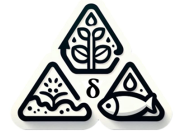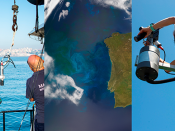Por Ícaro Dias da Silva (Instituto Dom Luiz, Portugal).
The allochthonous complexes of Galicia – Trás-os-Montes Zone (GTMZ) in NW Iberia are a rootless tectonic stack of imbricated slices, which preserves part of the Devonian-Carboniferous accretionary prism (including ophiolitic relicts) created in the Variscan continental convergence of Gondwana and Laurussia to form the Pangea Supercontinent. The age of deformation and metamorphism decreases with the grade of allochthonism, from the upper to the lower allochthonous units towards its relative autochthon, the Central Iberian Zone. The combination of big field and laboratorial datasets (geochronology, petrography, paleontology, and geochemistry) has allowed the identification of a continuous tectonic sheet, made exclusively of synorogenic marine sediments, that constitutes the basal unit of the GTMZ. This slice constitutes a piggy-back imbrication of Famennian to Serpukhovian synorogenic marine sequences (including flysch sequences, mass transport deposits and olistoliths), deposited in basins surrounded by the Variscan orogenic highs. They were incorporated to the accretionary wedge in the Late Devonian-early Carboniferous, as the orogeny closed these basins. The sedimentary sequences were then detached and tectonically transported into Gondwana inland, using a weak horizon of Silurian carbonaceous slates and forming a basal tectonic layer where the whole GTMZ has slid from its root zone in central Europe, towards externally orogenic areas.
Transmissão em direto via Zoom (password: RG234_2021).





















